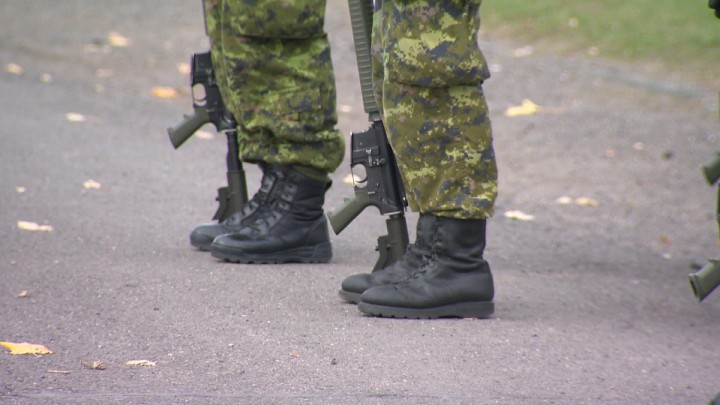TORONTO — Long after their days in a war zone are over soldiers suffering from post-traumatic stress disorder (PTSD) can tend to see more threat and danger in the world around them, compared to others not suffering from PTSD.

That’s according to a new study led by University of British Columbia and The Hospital for Sick Children (SickKids) in Toronto.
PTSD is a trauma-related mental disorder which can cause high levels of anxiety, leaving sufferers constantly on-edge, among other often-crippling symptoms. The findings of the study underlines how PTSD “influences the way the human brain views its environment.”
IN DEPTH: Invisible Wounds – Soldiers at war with PTSD
“Soldiers who suffer from PTSD may literally see a world more populated with reminders of trauma, thereby perpetuating its effects,” said the study’s lead author Rebecca Todd, an assistant professor in UBC’s department of psychology.
The study involved 44 soldiers from the Canadian Armed Forces — half of them with PTSD, and the other 22 without, but all on active duty. An MEG scanner was used to track how rapidly brain functions occurred when each soldier was placed inside the neuroimaging device.
The soldiers were shown 15 words in rapid succession, mostly neutral words in a black-coloured font. Two of those “targets” were in a green-coloured font, one a number and the other a “combat-related word, such as convoy, medic or deploy.”
WATCH: How horses are being used to help veterans deal with PTSD
Soldiers were told to report the two “targets.” The study found that when the second target appeared too soon after the first, it was often “simply missed.”
“It’s as if the mind blinks,” said Todd. “We think we see everything in our environment, but we don’t. Our brains are very good filters.”
However if the second target was “emotionally relevant” to the soldier, it was more likely to be seen.
READ MORE: ‘The invisible pain’: Veterans march across Canada to raise PTSD awareness
“While all soldiers showed a bias for combat-related words, this bias was more pronounced for the PTSD group,” the study states. “That group also displayed distinct patterns of brain activity and reported higher levels of emotional arousal for combat-related words.”
Experts are not sure why some who suffer trauma experience PTSD while others do not. According to the Canadian Mental Health Association there can be a number of factors including the length of trauma, the person’s past experiences with traumatic events, how they reacted at the time of the trauma, and how much support was received after the event.
Along with soldiers and other military personnel, first responders such as police and paramedics and medical professionals tend to experience higher rates of PTSD than other professions.
READ MORE: PTSD: No support for volunteer firefighters
“Soldiers with combat experience are more likely to see aspects of the environment that are associated with combat than civilians,” said Todd. “This effect is stronger in soldiers with PTSD than in those without.”
“This study adds to a growing literature suggesting there is a direct link between brain processes and PTSD symptoms,” says Dr. Elizabeth Pang, a senior author of the paper.
The study was funded by Defence Research and Development Canada, an agency of the Department of National Defence.


Comments